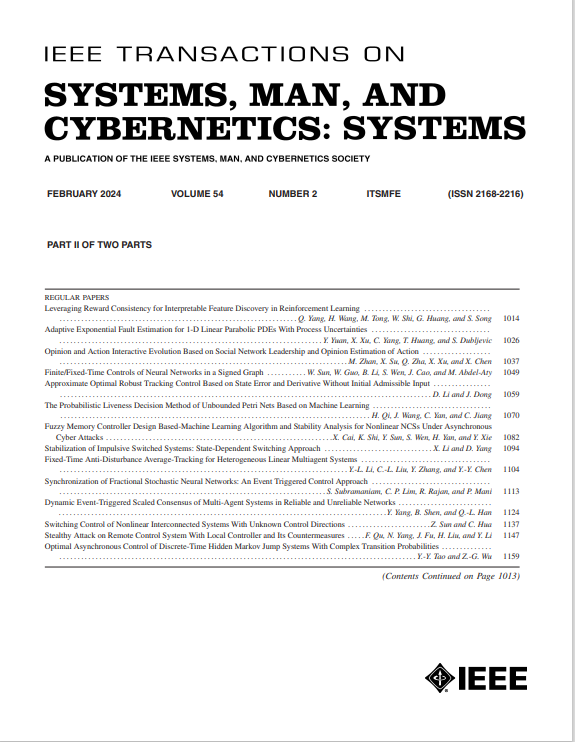Data and Prior-Driven Low-Light Enhancement Boosting the Visibility of Imaging Systems
IF 8.7
1区 计算机科学
Q1 AUTOMATION & CONTROL SYSTEMS
IEEE Transactions on Systems Man Cybernetics-Systems
Pub Date : 2025-07-08
DOI:10.1109/TSMC.2025.3579759
引用次数: 0
Abstract
Imaging systems working under poor lighting conditions often suffer from poor visibility, compromising the reliability of vision-based systems. To address this problem, recent studies have developed data-driven low-light image enhancement (LIE) techniques to improve visibility. However, these LIE methods typically require large amounts of training samples, and the learned representation may not be valid for real-world scenes due to data discrepancies. In this work, we propose DP-LIE, an unsupervised LIE method driven by both data and priors. Unlike the existing methods that learn unexplainable high-dimensional features for end-to-end mapping, DP-LIE focuses on learning prior-guided parametric maps with definite meanings, enabling the low-light images to be brightened from an interpretable prior-based perspective. To this end, we design a simple yet effective prior-guided network-assisted LIE formulation, which elaborately bonds the data-driven representations with the traditional priors. The embedded priors narrow the solution space of the LIE model, allowing it to be efficiently trained with fewer samples. Notably, even trained with just a single low-light input image, the proposed method (denoted as DP-LIE-S) achieves comparable performances with existing unsupervised LIE methods. Moreover, experiments demonstrate that the proposed DP-LIE method exhibits excellent generalization performance across diverse imaging devices and promises better detection results for vision-based detection systems in nighttime scenes.数据和先验驱动的低光增强增强成像系统的可见性
成像系统在较差的光照条件下工作,往往受到较差的能见度,损害了基于视觉的系统的可靠性。为了解决这个问题,最近的研究开发了数据驱动的低光图像增强(LIE)技术来提高能见度。然而,这些LIE方法通常需要大量的训练样本,并且由于数据差异,学习到的表示可能对现实场景无效。在这项工作中,我们提出了DP-LIE,一种由数据和先验驱动的无监督LIE方法。与现有的学习无法解释的高维特征进行端到端映射的方法不同,DP-LIE侧重于学习具有明确含义的先验引导参数地图,从而从可解释的基于先验的角度对低光图像进行加亮。为此,我们设计了一个简单而有效的先验引导网络辅助LIE公式,该公式将数据驱动的表示与传统的先验结合起来。嵌入的先验缩小了LIE模型的解空间,使其能够用更少的样本进行有效的训练。值得注意的是,即使只使用单个低光输入图像进行训练,所提出的方法(记为DP-LIE-S)也可以达到与现有无监督LIE方法相当的性能。此外,实验表明,所提出的DP-LIE方法在不同成像设备上具有出色的泛化性能,并有望在夜间场景中为基于视觉的检测系统提供更好的检测结果。
本文章由计算机程序翻译,如有差异,请以英文原文为准。
求助全文
约1分钟内获得全文
求助全文
来源期刊

IEEE Transactions on Systems Man Cybernetics-Systems
AUTOMATION & CONTROL SYSTEMS-COMPUTER SCIENCE, CYBERNETICS
CiteScore
18.50
自引率
11.50%
发文量
812
审稿时长
6 months
期刊介绍:
The IEEE Transactions on Systems, Man, and Cybernetics: Systems encompasses the fields of systems engineering, covering issue formulation, analysis, and modeling throughout the systems engineering lifecycle phases. It addresses decision-making, issue interpretation, systems management, processes, and various methods such as optimization, modeling, and simulation in the development and deployment of large systems.
 求助内容:
求助内容: 应助结果提醒方式:
应助结果提醒方式:


